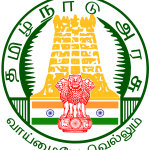
1. In which year Indian Universities Act was passed ?
A) 1904 B) 1903
C) 1902 D) 1901
Explanation : Ans : (A)
Indian Universities Act of 1904 :
The first provision of this act was that the governing bodies of the universities were to be reconstituted and the size of the senates was reduced. Now the number in the senate could be minimum 50 and maximum 100.
Each of them would hold the office for 6 years .
For the Universities of Bombay, Calcutta and Madras, the elected follows were to be 50 and for rest of the universities, the number was fixed 15.
This act allowed the Government to appoint a majority of the fellows in a university.
The Governor General was now empowered to decide a University’s territorial limits and also affiliation between the universities and colleges.
The Indian Universities Act made the universities and colleges completely under the Government control.
However, for better education and research a grant of ` 5 lakh per year for 5 years was also accepted.
Indian Universities Act, 1904 was passed during the governorship of Lord Curzon.
2. How many days money bills can be delayed by the Rajya Sabha ?
A) 11 days B) 12 days
C) 14 days D) 13 days
Explanation : Ans : (C)
Money Bills : Article 110 of the Constitution deals with the definition of money bills. It states that a bill is deemed to be a money bill if it contains ‘only’ provisions dealing with all or any of the following matters:
The imposition, abolition, remission, alteration or regulation of any tax;
The regulation of the borrowing of money by the Union government;
The custody of the Consolidated Fund of India or the Contingency Fund of India, the payment of moneys into or the withdrawal of money from any such fund;
The appropriation of money out of the Consolidated Fund of India;
Declaration of any expenditure charged on the Consolidated Fund of India or increasing the amount of any such expenditure;
The receipt of money on account of the Consolidated Fund of India or the Public Account of India or the custody or issue of such money, or the audit of the accounts of the Union or of a state; or
Any matter incidental to any of the matters specified above. However, a bill is not to be deemed to bea money bill by reason only that it provides for:
1. the imposition of fines or other pecuniary penalties, or
2. the demand or payment of fees for licenses or fees for services rendered; or
3. the imposition, abolition, remission, alteration or regulation of any tax by any local authority or body for local purposes.
If any question arises whether a bill is a money bill or not, the decision of the Speaker of the Lok Sabha is final. His decision in this regard cannot be questioned in any court of law or in the either House of Parliament or even the president. When a money bill is transmitted to the Rajya Sabha for recommendation and presented to the president for assent, the Speaker endorses it as a money bill.
The Constitution lays down a special procedure for the passing of money bills in the Parliament. A money bill can only be introduced in the Lok Sabha and that too on the recommendation of the president. Every such bill is considered to be a government bill and can be introduced only by a minister.
After a money bill is passed by the Lok Sabha, it is transmitted to the Rajya Sabha for its consideration. The Rajya Sabha has restricted powers with regard to a money bill. It cannot reject or amend a money bill. It can only make the recommendations. It must return the bill to the Lok Sabha within 14 days, with or without recommendations. The Lok Sabha can either accept or reject all or any of the recommendations of the Rajya Sabha.
If the Lok Sabha accepts any recommendation, the bill is then deemed to have been passed by both the Houses in the modified form. If the Lok Sabha does not accept any recommendation, the bill is then deemed to have passed by both the Houses in the form originally passed by the Lok Sabha without any change.
If the Rajya Sabha does not return the bill to the Lok Sabha within 14 days, the bill is deemed to have been passed by both the Houses in the form originally passed by the Lok Sabha. Thus, the Lok Sabha has more powers than Rajya Sabha with regard to a money bill. On the other hand, both the Houses have equal powers with regard to an ordinary bill.
Finally, when a money bill is presented to the president, he may either give his assent to the bill or withhold his assent to the bill but cannot return the bill for reconsideration of the Houses. Normally, the president gives his assent to a money bill as it is introduced in the Parliament with his prior permission.
3. SIDBI is
A) Service Industries Development Bank of India
B) Small Industries Development Bank of India
C) Savings Industries Development Bank of India
D) Small-Scale Industries Development Bank of India
Explanation : Ans : (B)
Small Industries Development Bank of India (SIDBI) : SIDBI was established as a wholly-owned subsidiary of the Industrial Development Bank of India (IDBI) under the Small Industries Development Bank of India Act, 1989 as the principal finance institution for promotion, financing and development of industries in the small scale sector. It started its operation from 2 April 1990 to provide assistance to the small scale industrial sector through the State Finance Corporation, Commercial Banks, etc.
Credit flow to Weaker Sections : To augment credit facilities to rural sector, Commercial Banks were advised by the Reserve Bank of India to provide atleast 10% of their net bank credit or 25% of their priority sector advances to weaker sections comprising of small and marginal farmers, landless labourers, tenant farmers and share-croppers, artisans, village and cottage industries, where individual credit limits do not exceed 50,000 to the beneficiaries of Schemes of Swarnajayanti Shahari Rozgar Yojana (SSRY) and beneficiaries of Swarnajayanthi Gram Swarojgar Yojana (SGSY) and Scheme for Liberation and Rehabilitation of Scavengers (SLRS), beneficiaries of Differential Rate of Interest (DRI) Scheme and Scheduled Castes and Scheduled Tribes.
Differential Rate of Interest Scheme : Under this scheme, which was introduced in 1972, public sector banks are required to fulfil the target of lending atleast one percent of the total advances as at the end of the preceding year to the weakest of the weak sections of the society at the interest of four percent per annum. This scheme covers poor borrowers having an annual income of not more than 6,400 in rural and 7,200 in other areas and not having more than 2.5 acres of unirrigated or one acre of irrigated land 6,500 is being given as term loan and working capital for productive ventures.
4. Yokohama strategy and plan of action was associated with
A) Natural resources management
B) Natural Disaster management
C) World Wars
D) World Poverty
Explanation : Ans : (B)
The First World Conference on Natural Disasters in Yokohama, Japan from May 23 to 27, 1994, adopted the Yokohama Strategy for a Safer World : Guidelines for Natural Disaster Prevention, Preparedness and Mitigation and its plan of Action, endorsed by the UN General Assembly in 1994. It was the main outcome of the mid-term review of the International Decade of Natural Disaster Reduction (IDNDR) and established 10 principles for its strategy, a plan of action and a follow-up. Furthermore, it provides guidelines for natural disaster prevention, preparedness and mitigation.
5. Advanced family of monocotyledanae is
A) Musaceae B) Poaceae
C) Solanaceae D) Orchidaceae
Explanation : Ans : (D)
Monocotyledanae :
Morphological features
Parallel venation is present in the leaves.
Presence of single cotyledon in the seed.
Redicle doesn’t persist and fibrous root is present.
Flowers trimerous
Monocolpate pollen is present.
Anatomical features
Vascular bundles are scattered in the stem.
Vascular bundles are closed (Cambium absent)
Secondary growth is absent.
The monocotyledons include about 60,000 species. The largest family in this group (and in the flowering plants as a whole) by number of species are the orchids (family Orchidaceae) with more than 20,000 species.






